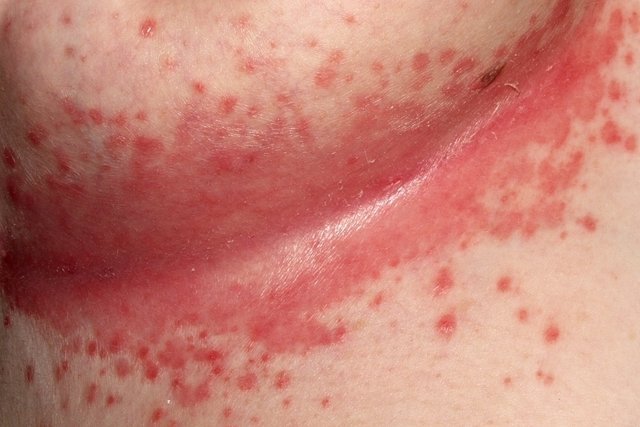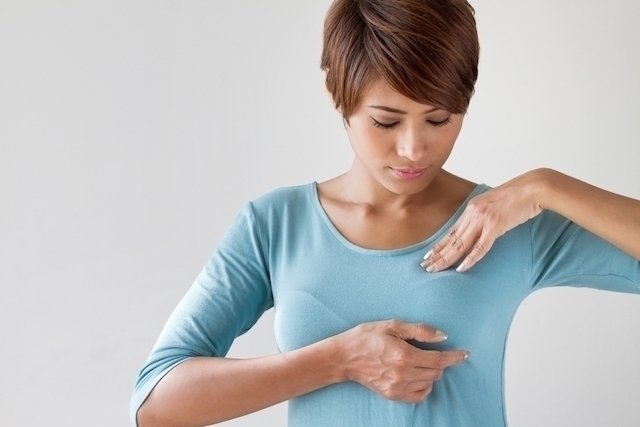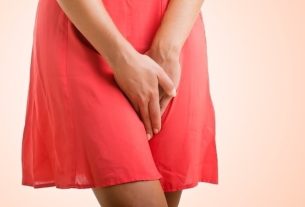Breast candidiasis occurs especially during breastfeeding, but it can also happen when a woman has high glucose levels and changes in the thyroid and the fungi naturally present in the skin multiply in a disorderly way, causing the infection.
In this case, the affected region is under the breasts, which happens mainly when the breasts are very large and cannot support their weight, forming a fold of skin that is naturally warmer and more humid, creating a very favorable scenario for the growth and development of fungi.
This type of breast candidiasis is also called candidal intertrigo and generally occurs in obese or very overweight people.
Sensitive content
This image may contain content that is uncomfortable for some people.

Symptoms of candidiasis in the breast
Candidiasis under the breast manifests itself through symptoms such as:
- Itching and redness under the breast;
- Peeling of the skin;
- There may be a bad smell;
- The region may be covered in a whitish liquid;
- Cracks may appear in the skin.
Women who have thyroid changes such as hypoparathyroidism, hypo adrenal glands, vaginitis, who have higher blood glucose levels, and who have recently used antibiotics or corticosteroid-based ointments are those at greater risk of developing candidiasis.
The diagnosis is made by the general practitioner or dermatologist by observing the symptoms that the woman presents, it is not always necessary to carry out tests to confirm the presence of the disease. Candida Albicansbeing restricted to cases where the usual treatment was not enough to cure it.
What treatment is recommended?
The doctor may recommend taking antifungal tablets such as Fluconazole and imidazole-based ointments to be applied directly to the affected region, which should be applied 1 to 2 times a day, for up to 4 weeks. Furthermore, it is recommended to keep the area dry at all times, and it may be useful to apply menthol talcum powder, for example. Cornstarch should not be applied as this favors the development of fungi, aggravating the situation.
You may need to avoid wearing a synthetic bra, giving preference to cotton fabrics that absorb sweat better. Sometimes you may need to change your bra more than once a day, especially on hot summer days. Wearing loose-fitting cotton blouses can also be recommended to ventilate the area, avoiding humidity.
The diet does not need to be carbohydrate-free, but it is recommended to reduce their intake, as well as sugar consumption, as they favor the development of candidiasis. Therefore, you should avoid rice, pasta, potatoes, bread and all sources of sugar. Check out more foods rich in carbohydrates that should be avoided during treatment.

Sign up for our newsletter and stay up to date with exclusive news
that can transform your routine!
Warning: Undefined array key "title" in /home/storelat/public_html/wp-content/plugins/link-whisper-premium/templates/frontend/related-posts.php on line 12
Warning: Undefined array key "title_tag" in /home/storelat/public_html/wp-content/plugins/link-whisper-premium/templates/frontend/related-posts.php on line 13




